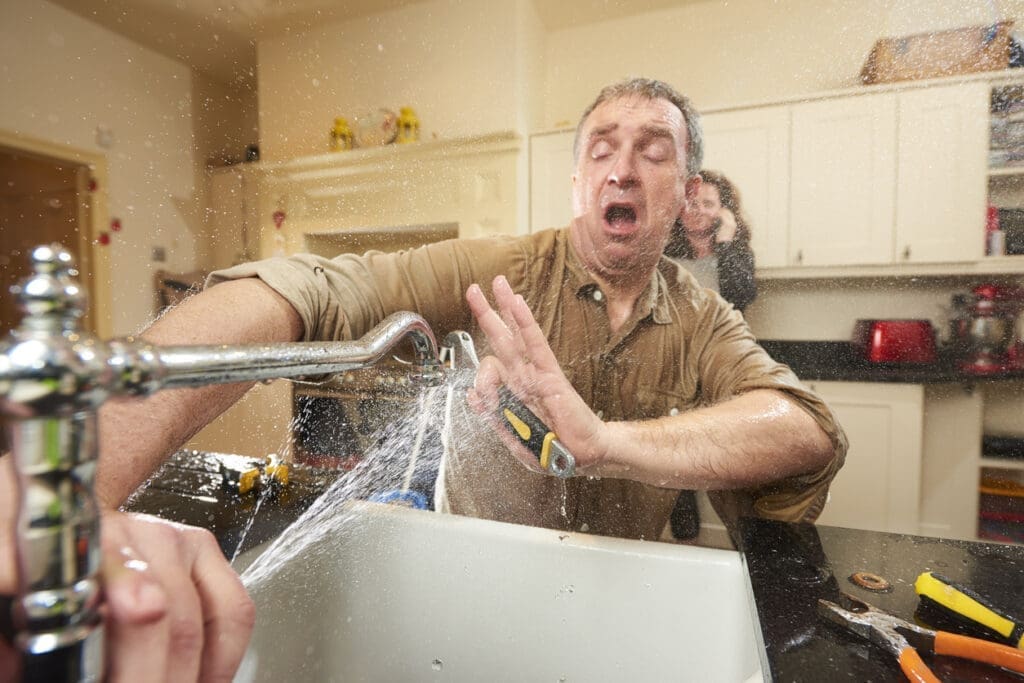
Plumbing issues can be frustrating to deal with, primarily when they result from a DIY project gone awry. While DIY plumbing projects can save you money and be fun, they can lead to expensive repairs if done incorrectly. Fortunately, many DIY plumbing mistakes are fixable. Keep reading to learn some of the common DIY plumbing mistakes people make and how to fix them.
Using the Wrong Tools
If you’ve ever wondered how to fix DIY plumbing problems, you probably have used the wrong tool at some point. Using the wrong tools can damage pipes and fittings, leading to leaks and other issues. For example, if you use pliers instead of a pipe wrench, you risk damaging the threads on a pipe, making it difficult to connect the fittings properly. To avoid DIY plumbing disasters, always be sure you’re using the correct tools.
Over-Tightening Connections
Another reason someone might wonder how to fix DIY plumbing problems is if the connections were over-tightened. While tightening connections as much as possible will prevent leaks, over-tightening can damage fittings and cause leaks. It’s essential to tighten connections just enough to create a watertight seal but not so much that you risk damaging the fittings. If you over-tighten and cause an issue, you must replace any damaged fittings.
Forgetting to Turn off the Water
Before starting any sort of DIY plumbing project, it’s critical to turn off the water supply. Forgetting to turn off the water can lead to flooding and water damage. If you started your project and realized you didn’t shut off the water, turn it off immediately to prevent further damage. Once the water is off, you can assess any damage and make any necessary repairs. If the water caused significant damage, do not try to repair it on your own and instead call the experts at Goodbee Plumbing.
Using the Wrong Materials
Similar to using the wrong tools, many DIY plumbing projects fail due to the use of incorrect materials. For example, using PVC glue instead of the correct pipe adhesive can lead to leaks and other issues that will cost you more in the long run. Therefore, always use the proper materials for the job and read labels carefully to ensure that you use suitable adhesive, sealant, or other materials.
Ignoring Local Building Codes
Ignoring local building codes is another DIY plumbing mistake that can lead to expensive repairs. Local building codes are in place to ensure that plumbing systems are installed correctly and safely. If you ignore local building codes, you risk installing a system that is not up to code, leading to safety issues and expensive fines and penalties. Before beginning any DIY project that impacts the infrastructure of your building, be sure to look up local building codes and ensure you are following them correctly. If you have any questions on whether or not you need a permit or a project needs a professional, give us a buzz!
Not Testing for Leaks
One of people’s biggest mistakes with DIY plumbing projects is not testing for leaks. Even if you think you’ve fixed a leak, it’s important to test the system to ensure that there are no further leaks. To test for leaks, simply turn on the water supply and check all connections and fittings. If you find a leak, make the necessary repairs. If you are struggling to fix it, don’t worry, just give us a call, and we will send out one of our expert plumbers!
Not Calling a Professional
Another significant mistake people make when it comes to DIY projects that leave them Googling “how to fix DIY plumbing projects” is not calling a professional when they need one. While many issues can be fixed on your own, some issues are too complex or dangerous for the average homeowner to handle. If you’re not sure if a plumbing issue is something you can handle on your own, don’t test yourself. It’s best to call a professional plumber to assess the situation.
At Goodbee Plumbing, we pride ourselves on draining your pipes, not your wallets. We are family-owned and operated and treat every client like family, so give us a call, and we are more than happy to help!
How to Avoid DIY Plumbing Mistakes
If you want to avoid wondering how to fix DIY plumbing mistakes, be sure to take into consideration some of our top tips for preventing any plumbing mishaps:
- Educate yourself before attempting any projects.
- Plan to ensure you have the correct measurements, tools, and materials.
- Seek expert advice if you need clarification on a particular aspect of your project.
- Take safety precautions and prioritize safety by wearing appropriate protective gear, turning off electrical sources near water, and exercising caution to prevent accidents or injuries.
- Start with simple tasks before heading into more complex projects.
Also, check out our blog on handy plumbing tools to keep on hand to ensure you are always prepared for any DIY project you may face! If you have any questions about tips to avoid DIY plumbing mishaps, read the other posts on our blog or call us; we are more than happy to help!
Contact Goodbee Plumbing for Your DIY Plumbing Fixes
DIY plumbing can be a great way to save money on repairs, but avoiding common mistakes to prevent costly repairs down the line is essential. By using the correct tools and materials, following local building codes, and testing for leaks, you can fix most DIY plumbing mistakes.
However, if you’re not sure you can handle a plumbing issue on your own or the problem is beyond your expertise, it’s best to call a professional plumber like the ones at Goodbee Plumbing. Our team has the knowledge, experience, and specialized tools to handle complex plumbing issues and ensure that repairs are done correctly.
